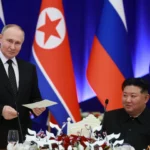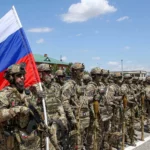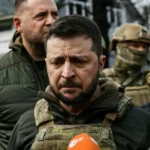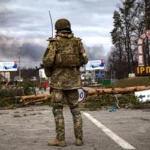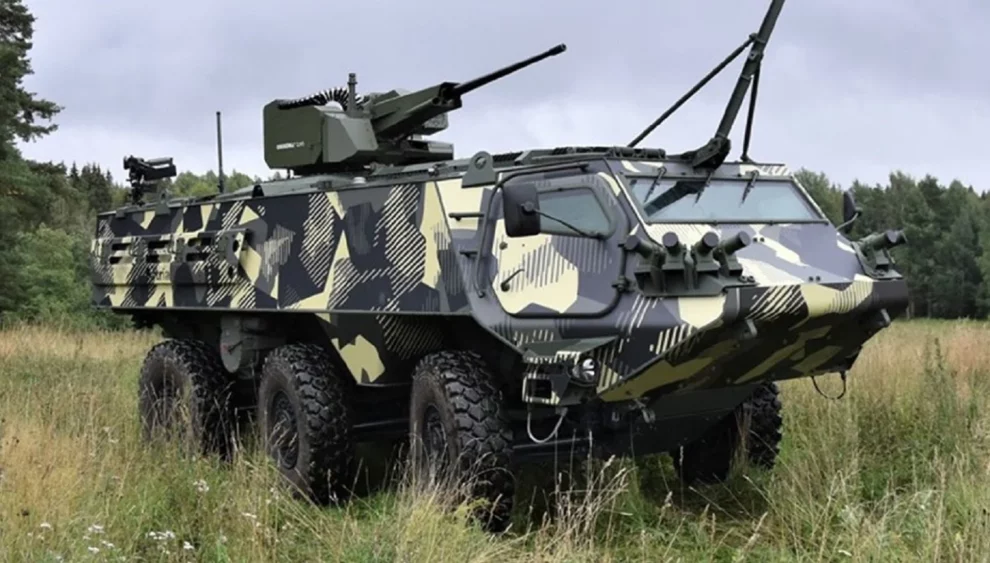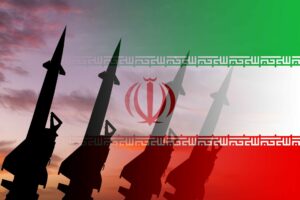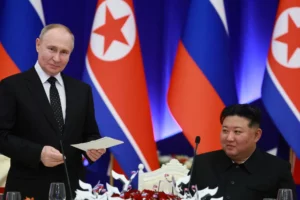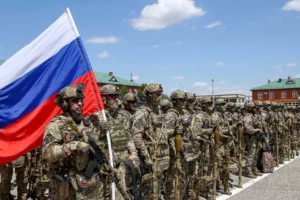The Leopard 2, PZH2000 and the Marder IFV are prime examples of the quality and strengths of German armoured vehicles, as demonstrated by their effectiveness in Ukraine. Beyond these “battle-proven” products, Germany is making significant gains in exports, with its defence industry seemingly profiting from “Zeitenwende” remilitarisation and limited international competition.
Russia’s illegal invasion of Ukraine back in February 2022 marked a complete transformation of European security policy. Chancellor Scholz famously referred to this moment as a “turning point” with regards to Germany’s post-Cold War military neutrality, and this ushered in a period of industrial revitalisation in the heart of Europe. Germany has been providing steady support to the Ukrainian Armed Forces since the invasion, so far providing or committing approximately €28 billion worth of military hardware and assistance to the stricken former Soviet Republic.
But now, with defence needs at home and abroad on the rise, the German defence industry is finally starting to boom once again. German Finance Minister Christian Lindner has even gone as far as to call for a “second turning point” in order to ramp up defence spending in the face of the war in Ukraine. ”The state is a client and customer of the security and defence industry, but the companies still need private investments and financing,” he said. “That’s why a second turning point is necessary that improves the reputation and framework conditions for the industry.” This means regulatory reduction, which can only come as good news for an industry once again finding its feet thanks to battle-proven sturdiness and high performance in Ukraine.
A rapid resurgence
This rapid political transformation has led to a resurgence in the German defence industry, notably with its development and production of state-of-the-art armoured vehicles and artillery systems to supply both the UAF and the Bundeswehr. This rebirth was highly visible at the recent Eurosatory 2024 event in Paris, France, where German defence giant Rheinmetall unveiled its new tank, the KF51-U, equipped with a high-tech uncrewed turret, formerly known as CUT (Concept Uncrewed Turret). “A new decade of security policy has begun,” said Armin Papperger, CEO of Rheinmetall, in the company’s latest financial results released in March. “We are sparing no effort in order to fulfil this task of national importance. We are investing massively, building new plants, and significantly increasing our personnel.”
Papperger announced on April 11 that this tank is set to enter production soon. This follows a research and development agreement with an undisclosed client for creating the production version and its ammunition. The gun features an autoloader and an ammunition storage capacity of 25 rounds. The turret is equipped with a 12.7 mm heavy machine gun paired with the main gun, and it includes a remotely controlled weapon station (RCWS) of the Main Sensor Slaved Armament (MSSA) type. This station features a three-barrel 7.62 mm Rheinmetall RMG762 machine gun, which ensures continuous fire even if one of the barrels malfunctions.
In more general terms, the German defence industry is booming, restarting production, for example, of its PzH 2000 155mm self-propelled howitzer at the KNDS facility in Kassel, a gun that has proven popular with many defence forces over the years. Croatia obtained 12 units from German Army stocks, while Germany initially received 185 new units, subsequently transferring 14 to Ukraine. Hungary is expected to take delivery of 24 new units by late 2024. Both Greece and Italy have procured new units, with Italy’s units being manufactured under license by Oto Melara (now Leonardo). Lithuania received 21 units from German Army reserves, and the Netherlands purchased 57 new units, of which 14 were later sent to Ukraine. Qatar also acquired 24 new units. Canada could likely be among the serious potential buyers of the PZH 2000 for a limited emergency purchase for a NATO deployment in Latvia, or even for a more substantial overall replacement programme for Canadian artillery. The Canadian forces would have already expressed their preference for a system that is as automated as possible, and combat-proven, and they could thus become one of the biggest customers for this equipment behind Germany. This would be another success for German manufacturers… Serial production of the PzH 2000 began back in 1996. The system was developed by the German companies Krauss-Maffei Wegmann (KMW) and Rheinmetall Defense to replace the aging M109 howitzers, fulfilling the need for a modernized and more capable artillery solution.
Germany is forging robust partnerships with top global defence suppliers, particularly evident in artillery development where efforts are extensive. Recently showcased at Eurosatory, Rheinmetall unveiled GMARS, an MLRS surpassing the American HIMARS, developed in collaboration with Lockheed Martin. Simultaneously, KNDS, a competitor, is advancing the EuroPuls program in close partnership with Israeli defence leader Elbit, whose equipment undergoes rigorous validation in Gaza. This advancement has progressed to the extent that the US is compelled to refrain from certifying its munitions for this competing platform.
Indeed, German industrial capacity is the envy of the world in terms of defence. “You’re going to have more munitions, more armaments, more vehicles and more industry linked to defence that is going to be made up around that Polish area,” says Mr Coombs, who previously served as a British soldier in Berlin during the Cold War. “Now, [defence companies] can do one or two things: [they can locate] east closer to Russia, which is unlikely. Or they can [shift production] west into Germany, where they have the factories, expertise, engineering and industrial property,” underlines Andrew Coombs, CEO of Sirius Real Estate, an owner and operator of industrial properties in Germany and the UK.
German quality revealed in Ukraine
Germany is undeniably at the forefront of armoured vehicle production, excelling in protection, mobility, and efficiency. Their vehicles are heavily armoured, offering exceptional protection, while their tracked systems have proven crucial on the Ukrainian front, demonstrating superior tactical mobility. Advanced automation technologies further enhance their efficiency, resulting in unmatched performance. Despite criticisms of their weight and cost, these attributes are essential trade-offs for the superior protection they offer. Notably, German industries report that none of the 16 PzH 2000 systems supplied to Ukraine have been lost and has become the most powerful artillery system in the Ukrainian inventory.
However, it’s important to recognize that these sophisticated systems are designed for advanced military powers, given their maintenance demands and the expertise required for operation. Quality inevitably comes at a price. What losses the Ukrainians have suffered, have often been down to a lack of training as opposed to the robustness of the hardware deployed on the battlefield.
Indeed, the proven successes of German armoured vehicles in Ukraine have led some commentators in other countries to highly recommend the manufacture of German tanks for national defence needs. Britain, for example, has a dire lack of main battle tanks and inadequate manufacturing infrastructure on its mainland. Many commentators therefore see the KNDS-produced Leopard 2 as the perfect solution: combat-proven, continuously upgraded, very positive export figures show it is a trusted tool, for many armies around the world.


